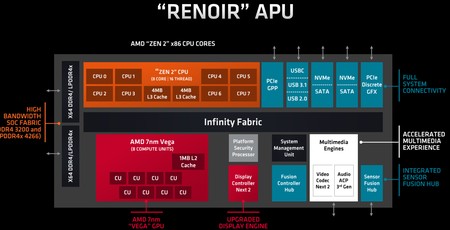
AMD has a released a selection of performance benchmarks comparing its upcoming 7nm Ryzen Mobile 4000 Series APUs to competing Intel 10th Gen processors, demonstrating multiple advantages over both 10nm Ice Lake and 14nm Comet Lake SKUs.
Before we get to the comparisons, it’s worth recapping on what AMD is bringing to market, especially as we now have more technical specifics to consider. The Ryzen Mobile 4000 Series (codename Renoir) was announced at CES as the successor to the 3000 Series (codename Picasso) of last year, and it’s set to improve AMD’s mobile offerings pretty much across the board, in part by introducing 7nm Zen 2 cores to the mix. Whereas the 12nm Zen+ Ryzen 3000 Series capped out with the 4c/8t Ryzen 7 3750H, we know that AMD will have 8c/16t Ryzen 7 and even Ryzen 9 parts. We’ll let the specs table serve as a memory jog for you (and us, to be honest):
| Processor | Cores/Threads | Base Clock | Max Boost Clock | Cache | Default TDP | Graphics Cores | Graphics Freq. |
|---|---|---|---|---|---|---|---|
| Ryzen 9 4900H | 8/16 | 3.3GHz | 4.4GHz | 12MB | 45W | 8 | 1,750MHz |
| Ryzen 9 4900HS | 8/16 | 3.0GHz | 4.3GHz | 12MB | 35W | 8 | 1,750MHz |
| Ryzen 7 4800H | 8/16 | 2.9GHz | 4.2GHz | 12MB | 45W | 7 | 1,600MHz |
| Ryzen 7 4800HS | 8/16 | 2.9GHz | 4.2GHz | 12MB | 35W | 7 | 1,600MHz |
| Ryzen 5 4600H | 6/12 | 3.0GHz | 4.0GHz | 11MB | 45W | 6 | 1,500MHz |
| Ryzen 5 4600HS | 6/12 | 3.0GHz | 4.0GHz | 11MB | 35W | 6 | 1,500MHz |
| Ryzen 7 4800U | 8/16 | 1.8GHz | 4.2GHz | 12MB | 15W | 8 | 1,750MHz |
| Ryzen 7 4700U | 8/8 | 2.0GHz | 4.1GHz | 12MB | 15W | 7 | 1,600MHz |
| Ryzen 5 4600U | 6/12 | 2.1GHz | 4.0GHz | 11MB | 15W | 6 | 1,500MHz |
| Ryzen 5 4500U | 6/6 | 2.3GHz | 4.0GHz | 11MB | 15W | 6 | 1,500MHz |
| Ryzen 3 4300U | 4/4 | 2.7GHz | 3.7GHz | 6MB | 15W | 5 | 1,400MHz |
Those two Ryzen 9 parts are new official announcements as of today, but anyone with their finger on the pulse has been aware of them for some time. The Ryzen 4000 H- and HS- Series are the 45W and 35W SKUs respectively (credit to Anandtech for the full -HS information), and all are geared towards gaming and content creation. Below these is the Ryzen 4000 U-Series with a 15W power envelope and targetting ultrathin devices, and of particular interest here is the Ryzen 7 4800U, as having eight cores running at just 15W is pretty awesome. With so many SKUs, the 4000 Series as a whole is much broader in scope than the Ryzen 3000 Series - a clear sign that AMD is ramping up its efforts in the laptop market.
Under the hood, the use of 7nm Zen 2 cores realigns AMD’s mobile parts with those in the desktop and server markets. This means the cores have the same raw IPC uplift in the region of 15 percent as they did on desktop. Add to this the move to the 7nm process, which itself brings huge efficiency gains via increased transistor density, and AMD’s claim that performance per watt is roughly twice what it was in the previous generation appears to be on solid ground.
As for the graphics, AMD continues to use Vega cores. Yes, they’re made on the newer 7nm process, but it’s still odd that Navi hasn’t been used instead. Odder still is that the maximum number of Compute Units has fallen from 11 to eight, but AMD reckons it can offer up to 59 percent more performance per CU – more than making up the deficit. This is again thanks largely to the 7nm process, which here enables new higher frequencies (up to 1.75GHz vs up to 1.4GHz). Other factors at play include greater memory bandwidth thanks to new support for up to 4,266MHz LPDDR4x (or 3,200MHz using normal DDR4), and other small design tweaks such as a wider interface between the GPU and the data fabric.
You can also expect to see better IO on account of four additional PCIe lanes and two extra USB ports - despite no major change in the package body size.
That’s all well and good, but AMD’s improvements against its own older products are only one piece of the pie. Of greater importance is how it’ll stack up against rival Intel, which has long been the dominant player in the laptop market. Beyond a few carefully selected benchmarks, little has been known about how AMD’s upcoming parts will compare to Intel’s 10th Gen laptop chips, but AMD has today revealed more benchmark results that aim to answer just that. As ever, vendor-supplied benchmarks should be taken with a pinch of salt until independents like ourselves can reproduce them on retail parts, but they’re a useful indicator nonetheless.
AMD’s benchmarks are focussed on the 15W U-Series. Peak performance here is found in two Ryzen 7 parts, the 8c/16t Ryzen 7 4800U and 8c/8t Ryzen 7 4700U, and that’s what we’ll focus on. The former is better on account of simultaneous multi-threading support, an extra graphics CU, and marginally higher peak CPU and GPU speeds. For comparison, AMD has chosen Intel’s two best 15W 10th Gen parts from the blue team’s own U-Series, one from the 10nm Ice Lake offerings (4c/8t Core i7-1065G7 with Iris Plus graphics) and one from the 14nm Comet Lake arsenal (6c/12t Core i7-10710U with UHD graphics).
The carefully crafted slide above reveals single-threaded, multi-threaded, and gaming/graphics advantages for the Ryzen 4000 parts regardless of whether they’re pitched against Ice Lake or Comet Lake thanks to impressive scores in both Cinebench and 3DMark Time Spy.
The plots above of course use hand-picked benchmark results, but the point they’re attempting to illustrate is that AMD’s mobile parts can get the better of Intel in many key areas, and that they are particularly dominant when it comes to multi-threaded performance against Ice Lake parts (no surprise given it’s 16 threads versus eight threads) and way faster than Comet Lake parts in gaming workloads thanks to the power of Vega, which also comes out better than the Iris Plus solution in Ice Lake in multiple games:
To reiterate, the full scope of performance can only be assessed once we have units in our labs, but it’s always interesting to see how products are being pitched. For the Mobile Ryzen 4000 Series, the message is one of no compromise.
Of course, no-compromise performance in no way means better battery life; in fact, you might expect the opposite to be true. Nevertheless, AMD reckons it can bring a fight to Intel here too and has added a bit more meat to the bone of its recent claims. Essentially, AMD has improved how power is managed across the chip. For example, it can respond to activity faster, switching quicker between low power and high/full performance states, and there’s less penalty for switching states too. In an attempt to illustrate the success of its efforts, AMD has first recorded estimated battery life figures for a selection of benchmarks on two laptops, with Intel claiming the lead in the majority of tests:
However, AMD then goes one step further by combining and normalising the results to produce a weighted figure based on how ‘a typical end user’ uses a laptop. Clearly, the weighting was heavier on the battery life figures where AMD came out on top, as the overall figure has AMD slightly ahead. We’d say the pinch of salt has at this point turned into a handful, but it’s still an interesting dataset, and the point AMD wants to stress is that battery life will be a match for what you get with Intel laptops. It’s fair to say we’re keen to put this to the test ourselves.
Regardless of precisely how accurate AMD’s figures turn out to be, it’s clear that it’s keen to start making a real dent in Intel’s dominance in the laptop market. With up to eight Zen 2 cores, optimised Vega graphics cores, and considerable efficiency gains on account of the 7nm process and design tweaks, the Renoir family of APUs looks poised to have a good go of it. Beyond raw performance, much will depend on pricing, of course, but also on a number of external factors such as OEM support (over 100 designs are expected this year), the quality of the laptop designs themselves, and shipping/global availability, especially at the moment (*cough* pandemic *cough* … oh shit).

MSI MPG Velox 100R Chassis Review
October 14 2021 | 15:04

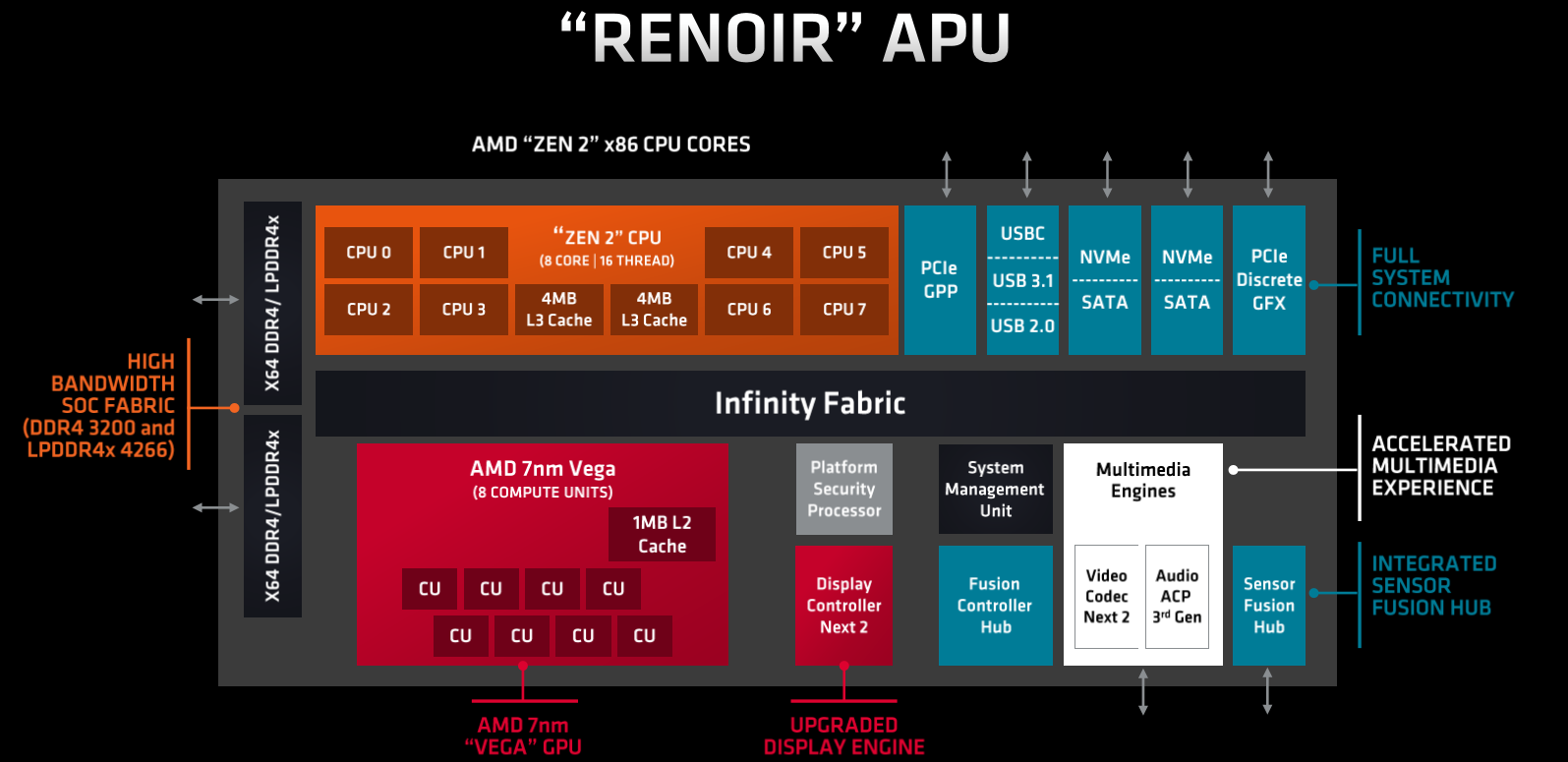
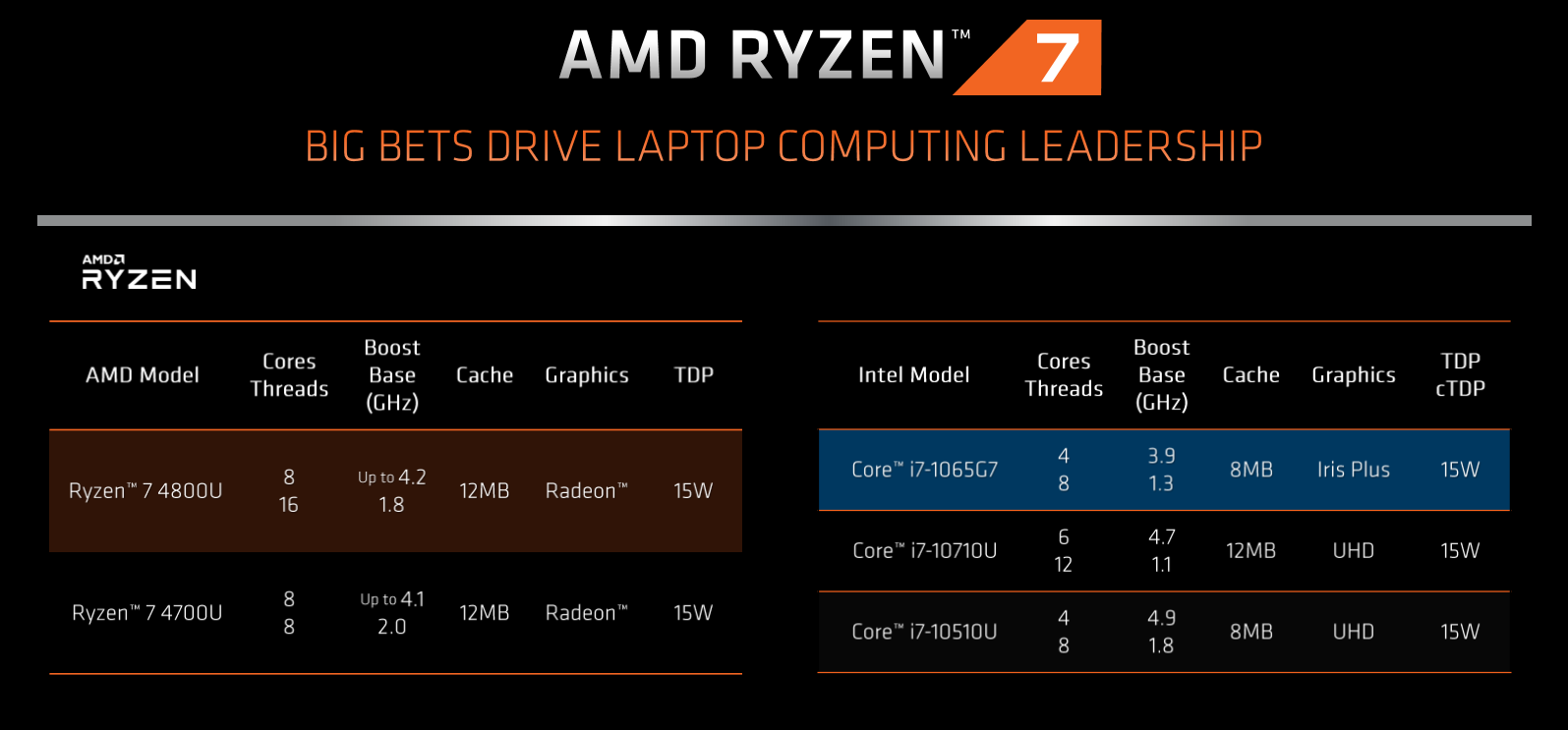
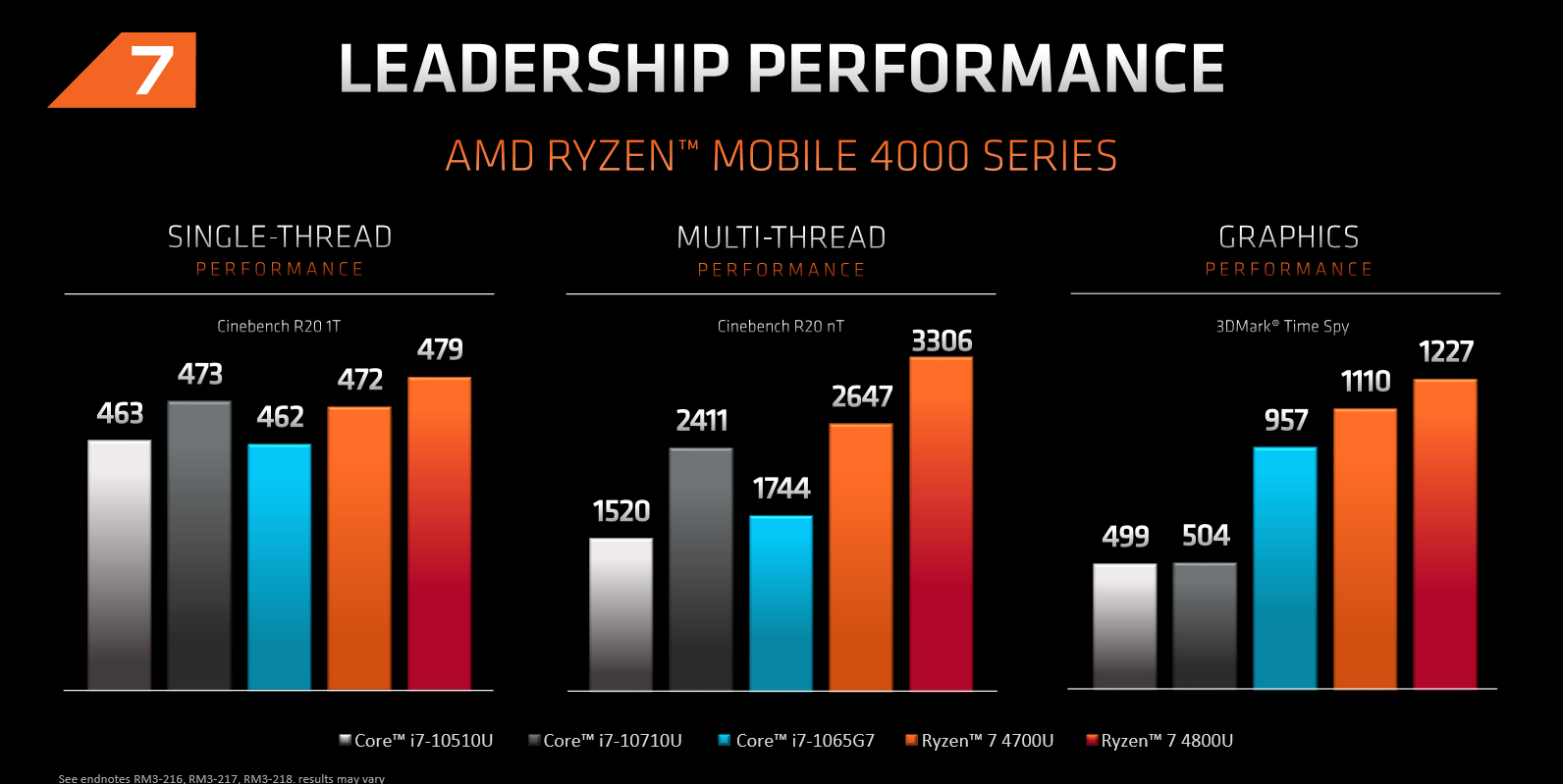
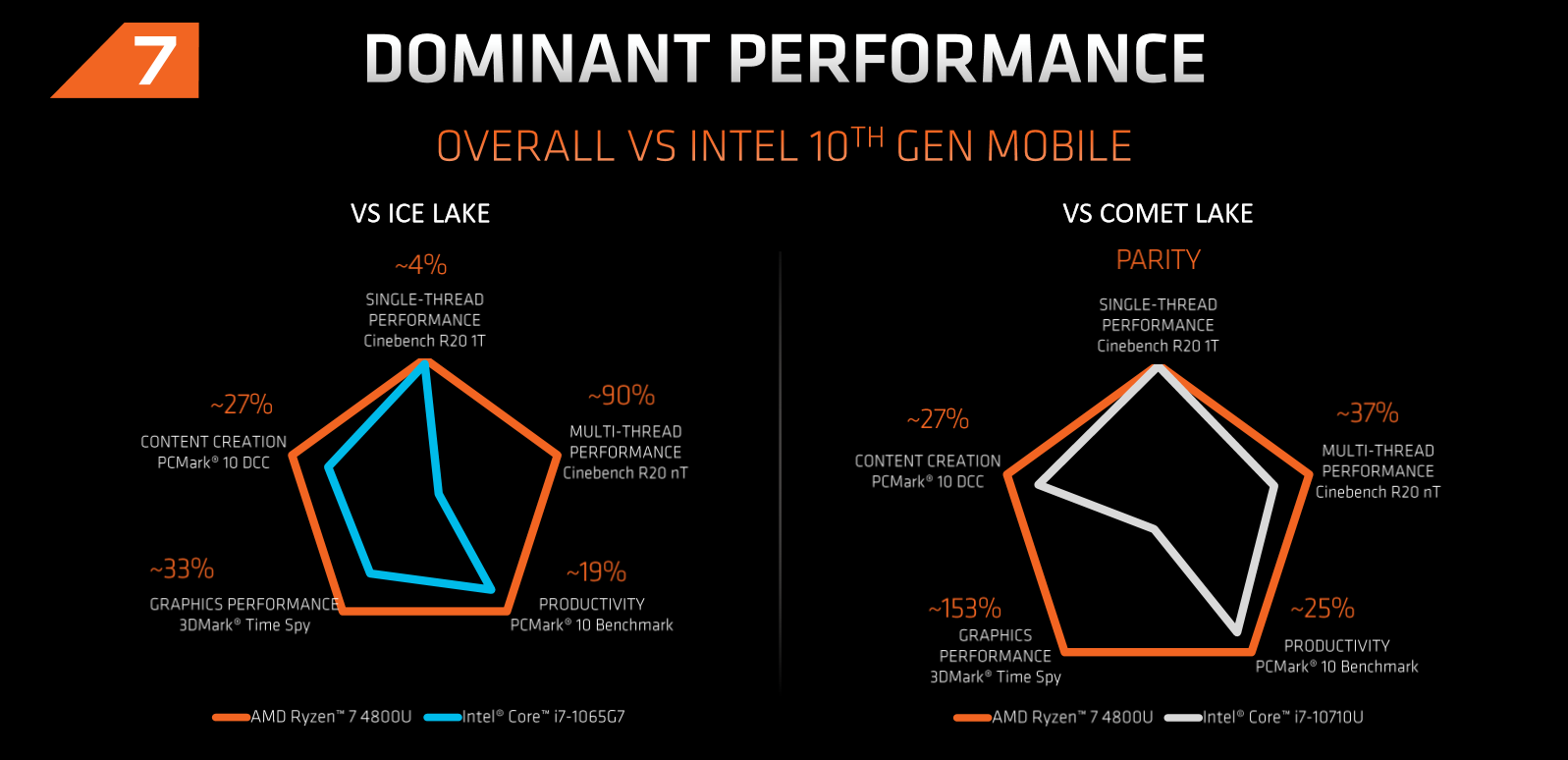
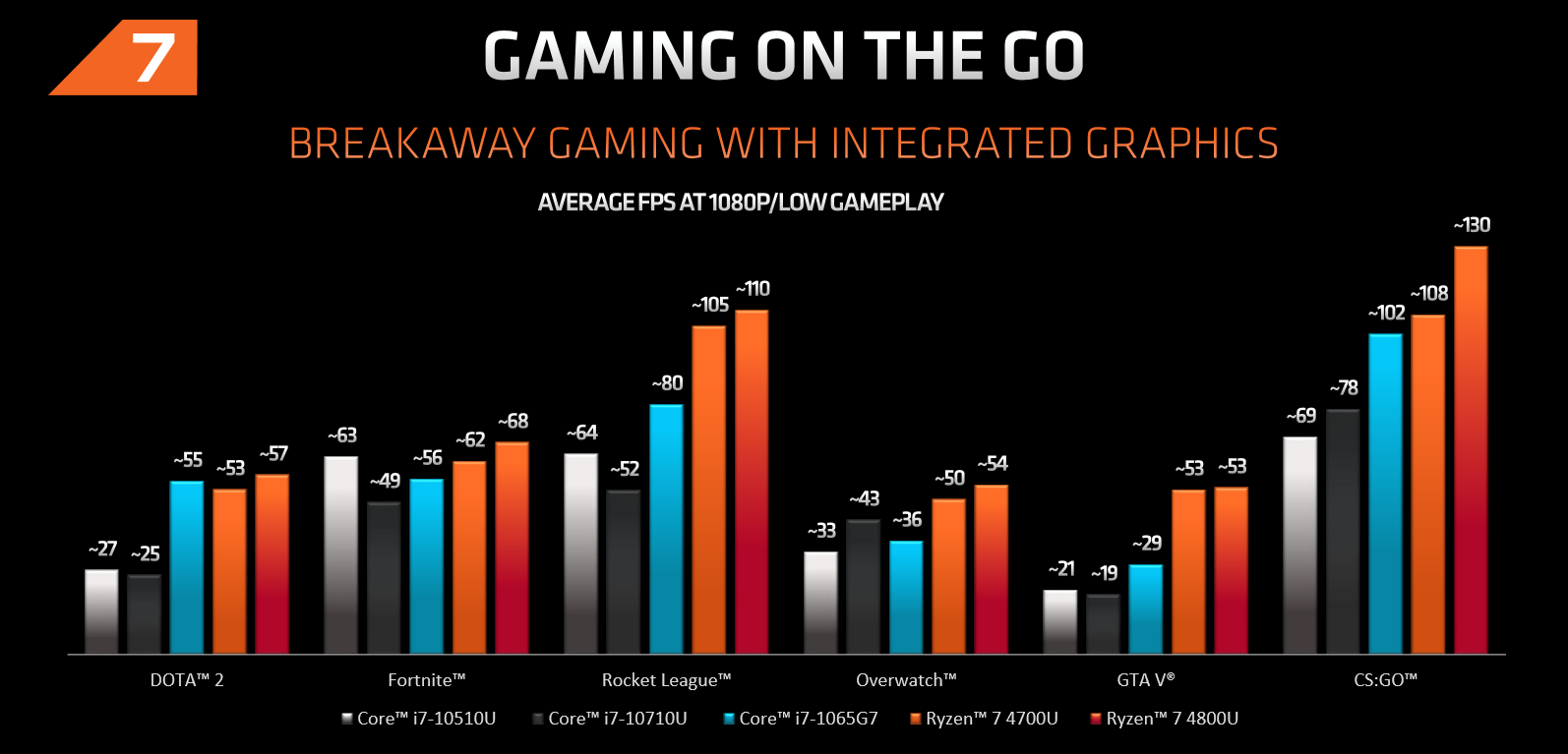
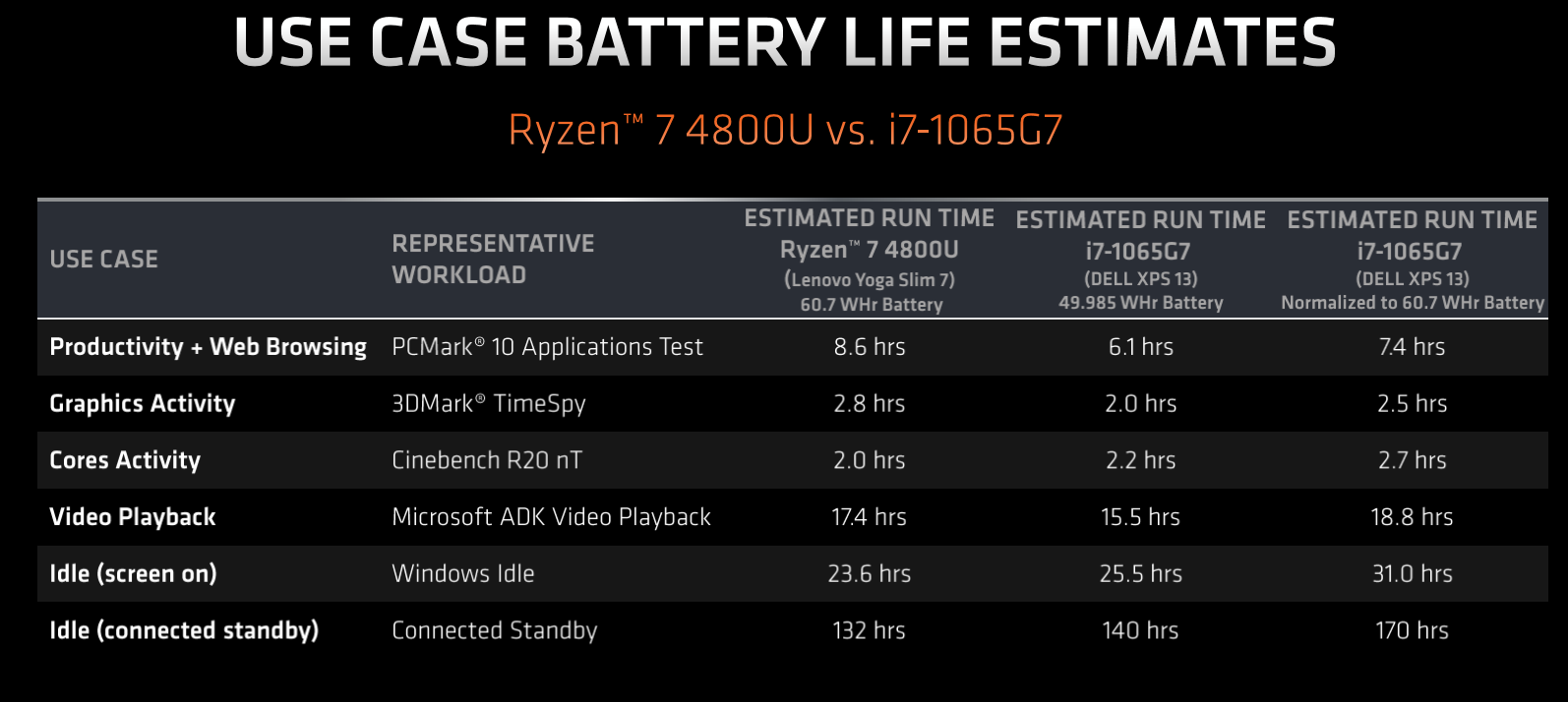
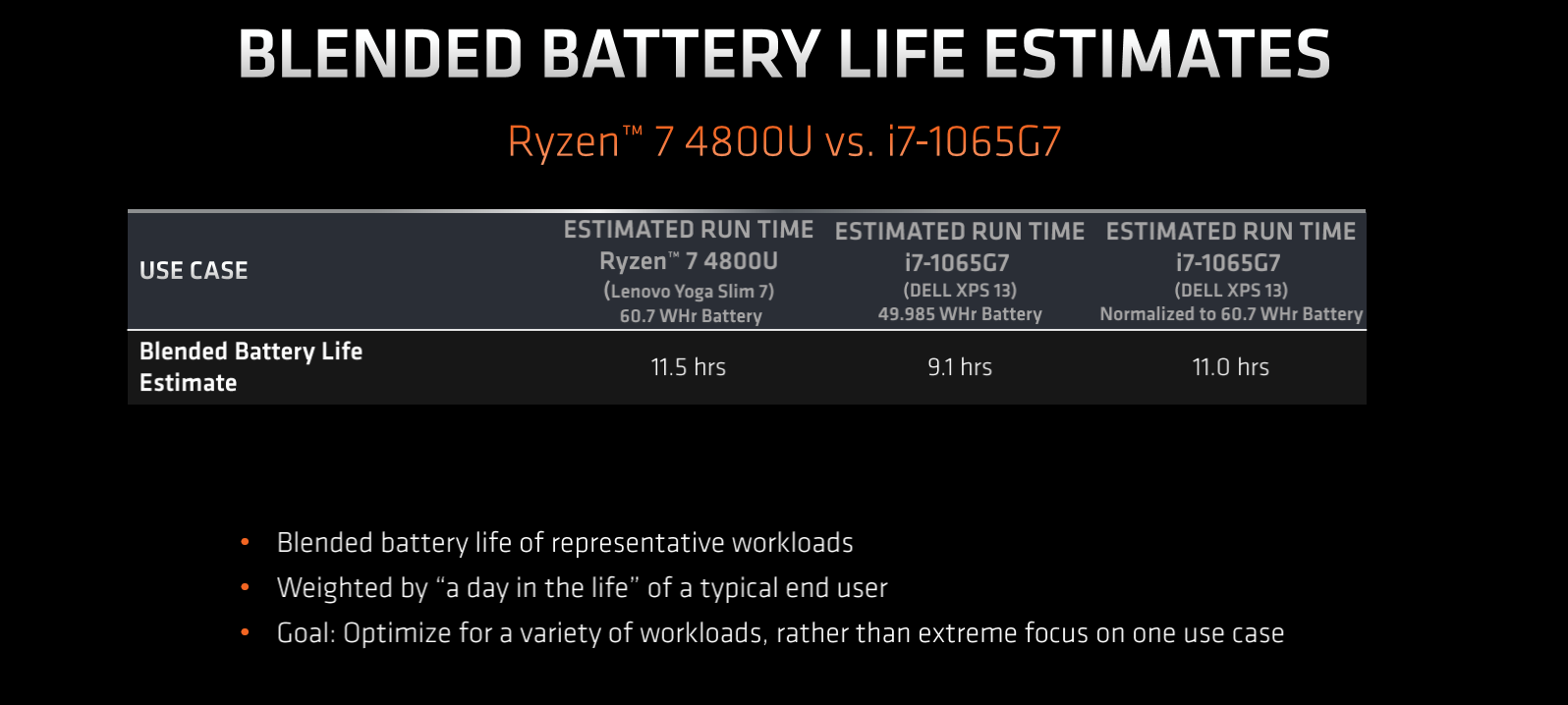
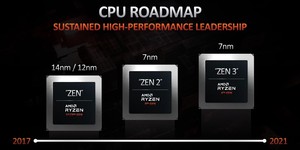
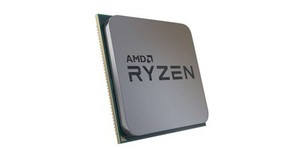
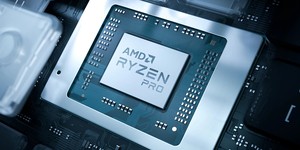




Want to comment? Please log in.